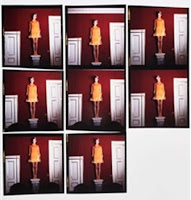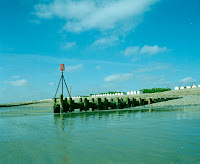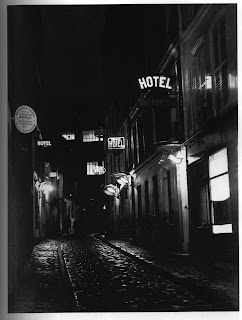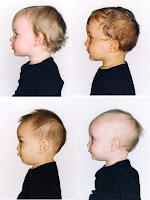Twiggy’s tiny, bird-like frame and painted-on lashes charmed the world
when she appeared on the scene in 1965; she personified all that was modern
& all that was happening in London at the time. Twiggy’s images are
timeless to this very day, her clothes, hair and quirky personality are all
still wearable today.
Her androgynous look peers back at an almost 20s look, with her boyishly short haircut & dramatic eye make-up often wearing three pairs of lashes at the same time.
Her androgynous look peers back at an almost 20s look, with her boyishly short haircut & dramatic eye make-up often wearing three pairs of lashes at the same time.
Lesley Hornby had
her hair coloured & cut short in Mayfair when the hair stylist was looking
for models to try out his new crop haircut on, styling her hair for some test
shots.
Professional
photographer, Barry Lategan took several photos which were hung in the salon.
Deidre McSharry, a fashion journalist saw the images and asked to meet her. Her
manager previously her hairdresser, Justin de Villeneuve persuaded her to
change her name to Twiggy, her childhood nickname given to her because of her
twig like legs.
Only being 16 years old, Twiggy was naturally slim weighing only 8 stone
had a 31-23-32 figure and was 5’6” which was shorter than a normal model
however critics believed she was promoting an ‘unhealthy’ body ideal for women.
While teenagers and women around the world were trying to conform to this body
type Twiggy in actual fact says she hated what she looked like, so she thought
‘everyone had gone stark raving mad’ when this craze emerged.
As Twiggy erupted on the scene in the mid-1960s fashion was changing
dramatically from swing skirts of the 50s to mini-skirts of the 60s. Designer
John Bates described her as a 'Narrow body, perfect square shoulders, long
legs, small bust', the opposite of the curvaceous Marilyn Monroe who was seen
as the perfect body in the 50s. The mini dresses and the 'A-line' fashions provided
a perfect vehicle for the colourful psychedelic and dramatic black and white Op
and Pop-art patterns of 60s designers and artists.
Rock musicians were early adopters of hippie fashion, as rock music genres became more
segmented, what an artist wore became as important as the music itself in
defining the artist's intent and relationship to the audience which was led by
Twiggy’s unique style.
 |
Twiggy in yellow velvet dress by
John Bates for Jean Varon,
photo by Cecil Beaton at 8 Pelham Place, London,
1967. Vogue
|
Back in the early 1960s, photography was a barely acknowledged medium and
was not established as an art form however fashion photographer Cecil Beaton
was the beginning of change. He had an ability to adapt himself to the mood of
both the time & the shoot, which can be seen in his images of Twiggy &
Marilyn Monroe, very different characters taken less than a year apart.
Cecil Beaton was at ease with famous figures as diverse as Mick Jagger
& Jean Shrimpton, they all went hand in hand with Beaton’s passion for
invention & reinvention and he was as much a part of swinging London as
they were. All of Beaton’s portraits are carefully set up, spontaneous
movements were removed from the shoots which can be seen in the contact sheet
of the iconic image I have chosen. Due to his cautiously thought out shoots,
Beaton portrays his subjects usually as dignified, in a flattering light; he
tried to get under the skin of his model & express their personalities in a
straight forward way.
As well as his home in Wiltshire Beaton also owned the London situated
town house, 8 Pelham Place where he took the iconic image of Twiggy stood on a
plinth that I have chosen.
In a 1967 Vogue magazine article called “The Changing Face of the
Fashion Model” featuring Cecil Beaton’s image of Twiggy he said, 'It is not the baby stare that makes Twiggy a success, rather it is her concave droop, as of a punctured marionette, the almost 'triumph over the spastic' appeal that sends her to the top of the class.'
Raising the tiny, doll-like figure above the audience on a plinth as if in a museum/gallery hints at the fashion, style & model being a timeless statement that he predicted which as we know came true. The way she is perched on the edge of the plinth makes Twiggy look fragile and weightless reflecting the critical view that the media had on her underage physique and its effects on teenagers & women in society.
Beaton has also set this 60s fashion shoot in a dated setting which
reflects Twiggy’s slightly 20s look; the rather regal colour co-ordination
between the outfit, wall colour and door frames of royal red & golds are
effective when showcasing the clothing. The way that the light shines off of
the velvet dress also adds to the majestic look of the figure and outfit high
up on the plinth. The way that everything included in the image apart from the
model is cropped decreases their
importance, both the doors and the plinth.
The mini style dress worn iconically by Twiggy in
this image was designed by John Bates who was well known as part of the
boutique scene that blossomed in London in the 60s. From 1959 Bates began
designing for the designer company, Jean Varon. He became known for his
modernistic youthful clothing particular elements being, bare midriffs, sheer
panels & very short hemlines, a dramatic contrast from the fashions of the
50s. He was seen as the true inventor of the mini-skirt by British Vogue
editor, Marit Allen, where my image was first published.
The royal colour scheme and plinth also metaphorically
represent how the style Twiggy brought into fashion is viewed as high above
every other fashion at that time and possibly in history through the eyes of
Beaton, Twiggy and the audience of Vogue magazine.
Over the course of Beaton’s career he employed both large
format cameras and small Rolleiflex cameras. Beaton was never known as a highly
skilled technical photographer, and instead focused on staging a compelling
scene and looking for the perfect shutter-release moment. This image was taken
using a square format camera and as seen in his contact sheet, Beaton took at
least 8 nearly identical frames to get the perfect expression & mood. He
took the shot from below the model, again enhancing the look of importance; and
the straight on view is very 60s creating very simple cut-out shapes-
rectangles, circles and triangles simplifying the short A-line style of the
era.
Task 2 'Street casting':
After choosing the photo of twiggy I began to think about
the sort of person I wanted to capture in my casting; I wanted someone who was
outgoing in their character as well as the way they dress similar to how Twiggy
was and was portrayed through her images. I also see Twiggy as a trend setter,
someone who stood out in the crowd so I wanted to find someone that doesn’t
wear what everyone else wears, doesn’t care what people think- sets their own
fashion.
Twiggy didn’t become famous for her ‘perfect’ beauty or
because of her height as she was under the average height of a model, 16 years
old and flaunted a tom boy haircut. She started the teenage revolution,
declared as the Face of 1966 she was a bold contrast from the mannequin looking
models of the era. I was therefore very interested in finding someone that
didn’t necessarily fit the social norm of beauty.
Twiggy was a shy teenager but showed her personality through
her style and appearance; while researching Twiggy I had thought about asking
my friend Carlie to be my casting model however I thought I would search for a
model on the streets first, by chance I bumped in to her and out of my images
of the day she fitted my requirements best.
 |
| My Casting Image |
Her dress sense is different, she sets her own trend and
doesn’t wear what society expects; Carlie mix & matches her outfits buying
old & new, cheap & expensive items, which I could imagine Twiggy doing.
Through research I found she was known by designers to modify & wear
vintage clothing as well as wearing the new fashion starting up her own line of
clothing in 1967. Like Twiggy, she has an unconventional beauty, cropped
haircut, pale complexion & a very petite figure, in no way the usual
stereotypical look of a supermodel.
Twiggy’s poses were very outgoing and
spontaneous never needing much direction which I knew I could achieve from
Carlie as she is unique and crazy and as soon as I raised my lens to capture
her she did the pose that I chose for my casting image. I think most people are
self-conscious in some way however due to her character I think Carlie would be
an interesting challenge in a photo shoot; in terms of flexibility she would be
easy to spontaneously photograph however I think she would be a challenge to
direct because she likes to do her own thing.





























